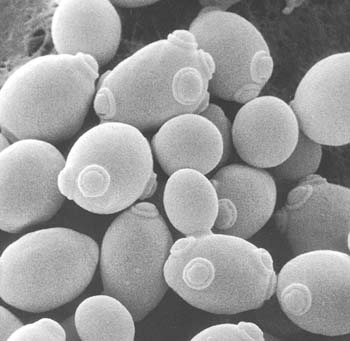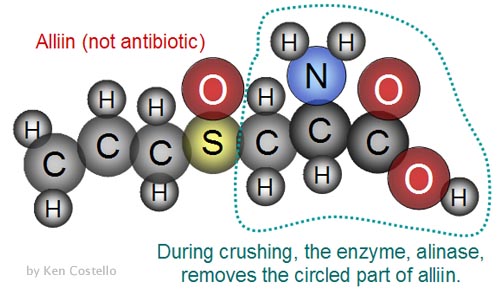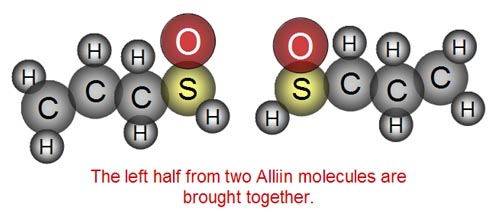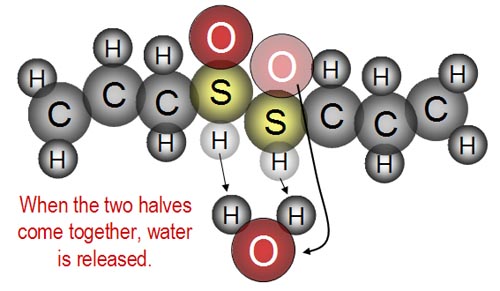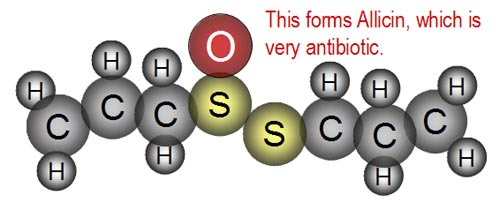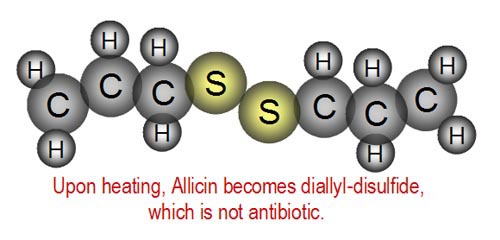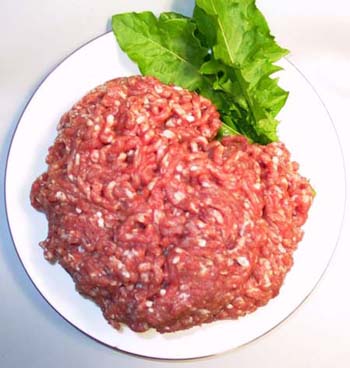

Question 3: Without refrigeration, earlier societies had to find other ways to preserve foods. Packing the food in salt was one way. Nowadays not too many foods are preserved that way because we all know that too much salt is bad for you. But search the Web and find a food that is sold packed in salt. (tip: search by using quotes around "packed in salt".
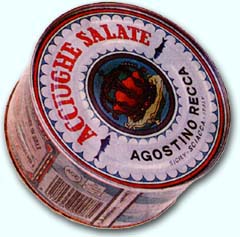
Question 4: The image at the right shows yeast cells that are added to wine to convert sugars to alcohol. Are yeast cells plants, bacteria, fungi, or viruses? (Tip: www.dictionary.com is pretty good for definitions of many things.
